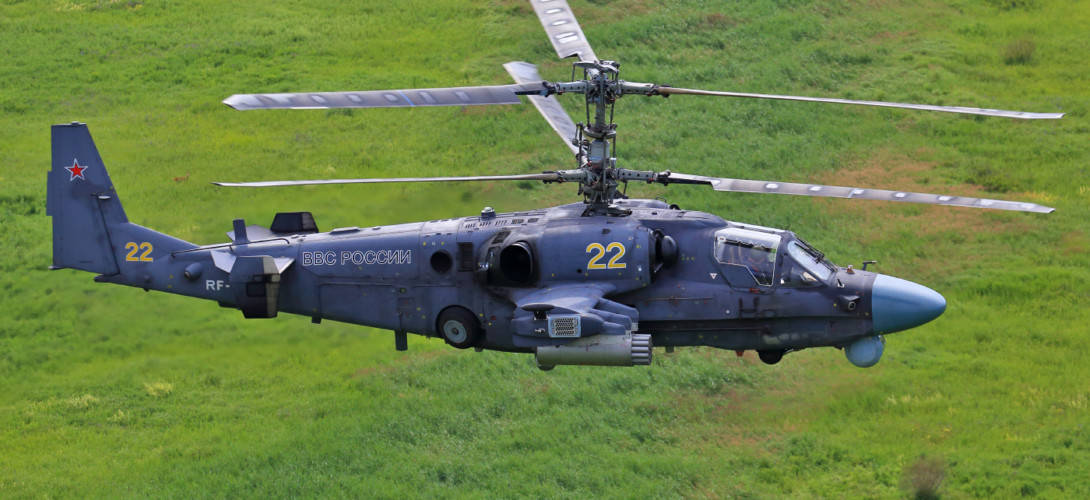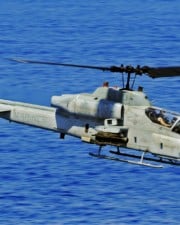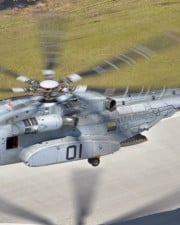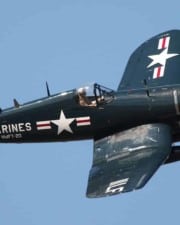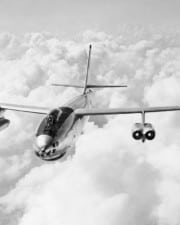Few countries have left their mark on the history of aviation quite as much as Russia, and that includes helicopters. Past, present, and future, military, transport, and otherwise, these helicopters have achieved liftoff into the pantheon of the best Russian helicopters.
One of the most important things to keep in mind about Russia’s wide range of helicopters is that, as with choppers in any nation’s aviation arsenal, they are designed for a wide range of purposes.
There are options on this list that are heavy duty and meant for the rigors of war. Some of these are armed to the teeth, and others have lighter armaments and are meant for light combat or defending itself during transport.
Speaking of which, there are a host of transport helicopters on this list as well. These likewise vary in size, with some being large enough to transport dozens of troops or stretchers to the front line, and others being smaller and designed for more nuanced situations.
Finally, there are a few Russian helicopters that don’t fit these niches or else are still in development.
All of these combine to give Russia a wide range of helicopters that are useful not just within their own borders, but in the Middle East and around the world.
Best Russian Military Helicopters
1. Kamov Ka-27, 28, and 29
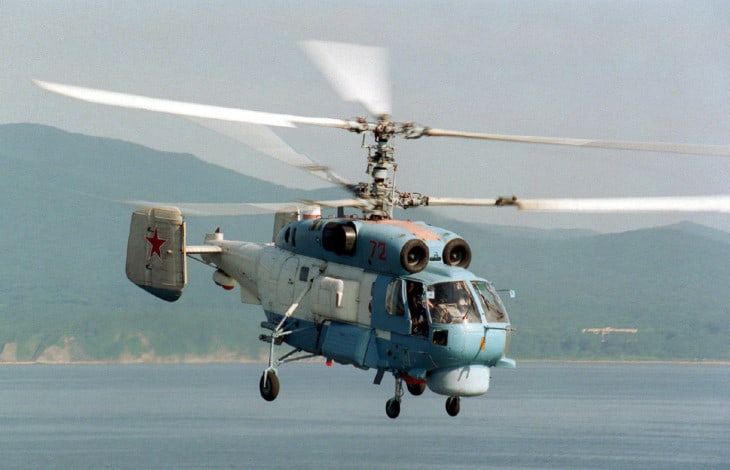
This is really three models in one – the standard Ka-27 helicopter, a downgraded Ka-28 version, which is used for export purposes, and the Ka-29, which is the assault version that can be outfitted with armaments. The modified Ka-27/29 has been spotted operating for the Syrian Navy during the Civil War.
In 2013, Russia began testing active electronically scanned radar capabilities for the Ka-27. That same year, however, an exported Ka-32 (a variant for civilian use) in British Columbia, Canada experienced engine problems that were determined to be due to poor construction.
The K-27 measures 37 ft 1 in. long, has a maximum takeoff weight of 26,455 lbs, has a crew of one to three with a couple more specialists, and the K-29 variant can be armed with 1×mobile forward firing GShG-7.62 machine gun, 1×30 mm 2A42 cannon, and various bombs.
2. Kamov Ka-50 and 52

Another case of a helicopter with a variant, the Ka-50 is the standard model and the Ka-52, which is a variation on that theme. The Ka-50 was used in the Second Chechen War, and a strike on January 6, 2001 marked the first time that it deployed weapons in combat.
Ka-52s have been deployed during the Syrian Civil War, with April 2017 seeing them attack ISIS positions as part of the Palmyra Offensive. The model was also shown off during the 2013 Paris Air Show, and has drawn interest from foreign buyers such as Egypt.
The Ka-50 measures 52 ft 6 in., has a maximum takeoff weight of 23,810 lbs, a maximum speed of 196 mph courtesy of 2×Klimov VK-2500 turboshaft engines, and can be armed with 1×mobile semi-rigid 30 mm Shipunov 2A42 cannon, S-8 and S-13 rockets, and several kinds of missiles and bombs.
3. Mil Mi-24
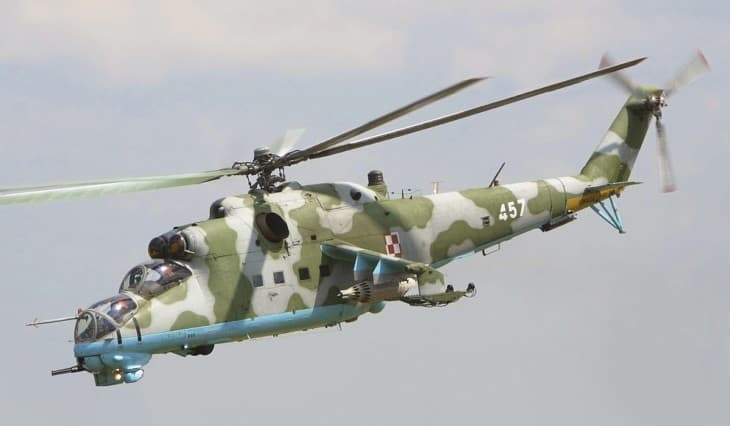
There are many nicknames for this decades-old military helicopter, including the “Galina,” “Crocodile,” and “Drinking Glass.” It was used by Ethiopia in the Ogaden War, by Libya in their involvement in the Chad Civil War, and even more extensively by the Soviet Union in their invasion of Afghanistan.
More recently, the Assad regime used them in their attack on Aleppo during the Syrian Civil War. In 2014, ISIS forces in Iraq downed at least two Mi-24s, and on November 9, 2020, during the invasion of Artsakh and the 2020 Nagorno-Karabakh War, Azerbaijan downed one owned by Russia.
The M-24 measures 57 ft 5 in., has a maximum speed of 208 mph thanks to 2×Isotov TV3-117 turboshaft engines, can carry eight soldiers and four stretchers, and can use a wide range of potential arms, with the exact armaments varying by country.
4. Mil Mi-28

This attack helicopter has received a long-term state contract to be produced through 2027. It made its combat debut for Russia during the Syrian Civil War, taking part in the Palmyra Offensive on the part of the Syrian Arab Army in support of the Assad regime.
In the course of this support, Mi-28s targeted ISIS, attacking several positions with S-8 rockets as well as 9M120 Ataka anti-tank guided missiles. Its combat debut for Iraq came earlier when, in 2015, they took part in the Battle of Ramadi to purge ISIS forces from the city.
The Mi-28 measures 55 ft 10 in., can obtain a maximum speed of 2×Klimov TV3-117 turboshaft engines, and can be armed with 1×chin-mounted 30 mm Shipunov 2A42 cannon, Ataka-V anti-tank missiles, and S-8 and S-10 missiles.
Best Russian Transport Helicopters
5. Kamov Ka-60 and 62

The Ka-60 being the military version and Ka-62 being the civilian version, this helicopter was first introduced back in 1998 but has since entered something of a development purgatory. Development began as early as 1984, and the first prototype took flight in 2007.
Things haven’t continued at a faster pace since then, either. Further tests over the next decade attempted to sort out issues with the engine and other problems, and it took until 2017 for the model as it currently exists to make its maiden flight.
The Ka-60 has a crew of one or two, measures 51 ft 2 in., and has a maximum speed of 191 mph. The Ka-62 can carry 14 infantry troops or, if used in a medical capacity, six stretchers.
6. Kamov Ka-226

As opposed to the Ka-60, this transport-capable helicopter, a variant on the old Soviet light utility Ka-26 helicopter, has seen much more widespread adoption. First entering Russian service in 2002, several batches have been made and distributed to buyers around the world.
Argentina has three Ka-226s on order, India has 200 (1235 for its Army, 65 for its Air Force), and Ukraine has 10. Russia’s own Air Force has 36, whereas its Federal Security Service has six and its police force has expressed interest as well.
The Ka-226 measures 25 ft 7 in., has a crew of one or two, can transport seven passengers, can hold 2,314 lbs of cargo, and can reach a maximum speed of 155 mph via 2×Turbomeca Arrius 2G1.
7. Kazan Ansat

Another model that saw a long development time, this multiuse helicopter was first developed in the late 90s but was first introduced for service in 2013, at which point it received certification from the Aviation Register of the Interstate Aviation Committee.
Earlier versions of the Ansat were used by the Ministry of Defense, Ministry of Internal Affairs, Ministry of Emergency Situations, FSB, and other elements of the Russian state apparatus. Bosnia and Herzegovina have ordered three Ansats.
The Ansat measures 45 ft 2 in., has a crew of one or two, can carry seven to eight passengers and two to three stretchers, has a maximum takeoff weight of 7,937 lbs, and has a maximum speed of 171 mph courtesy of 2×Pratt & Whitney Canada PW207K turboshaft engines.
8. Mil Mi-8
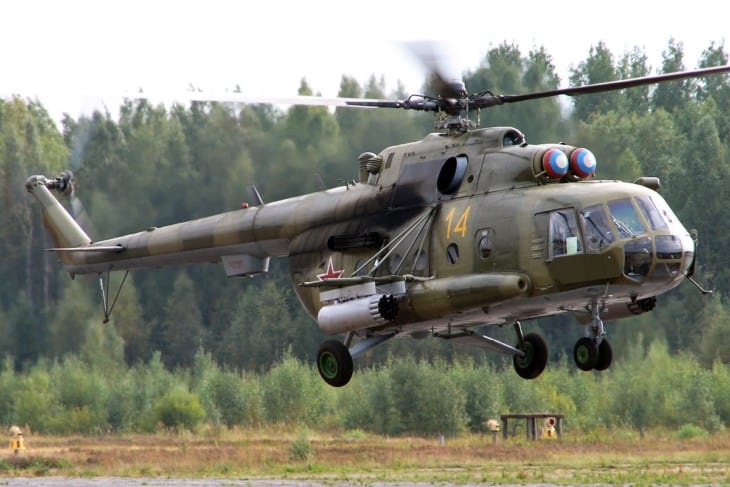
Designed in the 1960s, these transport helicopters saw Soviet use during their invasion of Afghanistan in the 1980s. They were favored in part because their rugged build made them useful fits for the terrain, but while official statistics are hard to obtain, many are believed to have been shot down.
They also saw use during the decade in responding to the Chernobyl Nuclear Disaster. Once again, however, the Mi-8 met with tragedy as a video captured one crashing into a crane, and the neutron-absorbing boron the helicopters dropped did not reach the nuclear core.
The Mi-8 measured 60 ft 4 in., were crewed by three people, could carry 24 passengers or 12 stretchers, and had a maximum speed of 160 mph.
9. Mil Mi-17

This helicopter is part of many different militaries’ repertoire. It was used by the Cambodian military in the 1990s, and in that same decade an Indian Mi-17 was shot down during Operation Safed Sagar, one of the many conflicts India has had with Pakistan.
Sri Lanka has employed it during its attempt to combat terrorism, the United States used CIA versions of Mi-17s in the early stages of the post-2001 War in Afghanistan, the Mexican Navy employs it for anti-narcotics smuggling missions, and both sides used them during the Libyan Civil War.
The Mi-17 measures 60 ft 7 in., has a crew of three, can carry 24 troops, 12 stretchers, and 8,818 lbs of cargo, and has a maximum speed as powered by 2×Klimov VK-2500PS-03 turboshaft engines.
10. Mil Mi-26
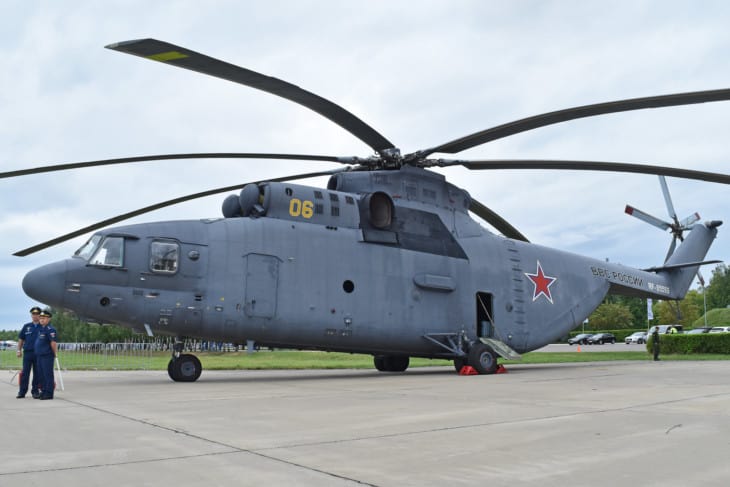
This heavy transport helicopter is one of the biggest helicopters operational and was another aircraft deployed in relief of the Chernobyl Nuclear Disaster, and a Chechen separatist was able to down one in 2002. In happier news, an Mi-26 also participated in the transportation of a preserved woolly mammoth found in Siberia in 1999.
In 2009, six Ukrainians aboard a Moldovan Mi-26 on a relief mission to Afghanistan were killed when their chopper was downed. On December 14, 2020, an Indian Mi-26 crashed in Jammu, with an investigation revealing an improperly secured vehicle to have been the culprit.
The Mi-26 measures 131 ft 4 in., has a crew of five, can carry 90 soldiers or 60 stretchers, can carry 44,000 lbs of cargo, and has a maximum speed of 183 mph as powered by 2×ZMKB Progress D-136 turboshaft engines.
Other Russian Helicopters
11. Kamov Ka-31
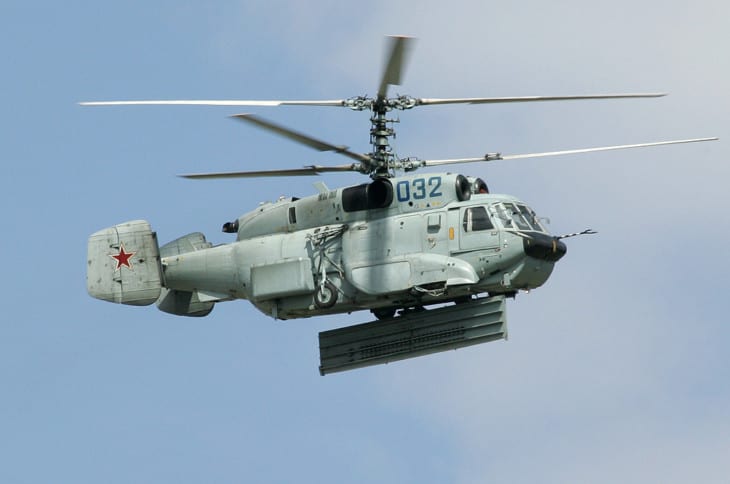
Originally developed for the Soviet Navy, this helicopter is currently used by the Russian, Chinese, and Indian militaries. India ordered four of these in 1999, five more in 2001, and all of these helicopters were delivered by 2005, at which point they entered service.
At the outside of their usage of the helicopter, the Indian Navy realized that it had limited endurance and range, which caused them to attempt to develop a helicopter-to-helicopter refueling system to compensate. China, meanwhile, has stationed them in naval bases in its Eastern provinces.
The Ka-31 has a crew of two, measures 41 ft, is powered by 2×Isotov TV3-117VMA turboshaft engines, can attain a maximum speed of 160 mph, has a range of 370 mi overall and 320 nmi, and has an endurance time of 2 hours and 30 minutes.
12. Mil Mi-34
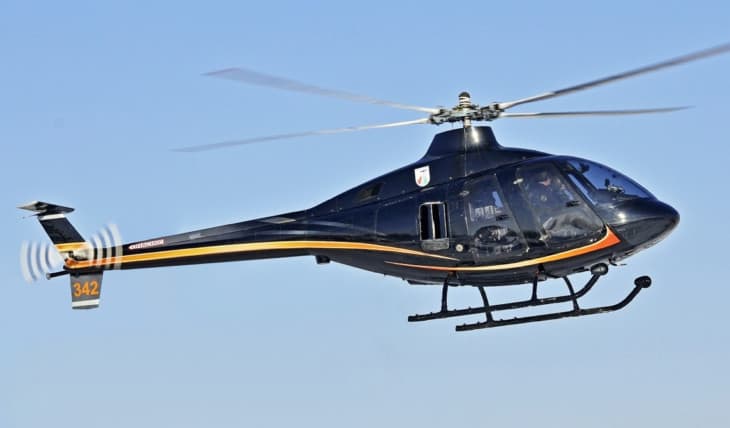
Introduced toward the end of the Soviet Union, the Mi-24 first made its debut on November 17, 1986, after which it was displayed at the 1987 Paris Air Show. Following this display, it entered mass production a few years later in 1993.
The Mi-34 is highly aerobatic, and is able to perform all manner of rolls and loops. The light utility craft has been produced for Bosnia and Herzegovina as well as Nigeria.
The Mi-34 measures 37 ft 5 in., has a maximum takeoff weight of 3,197 lbs, and has a maximum speed of 130 mph as powered by 1×Vedeneyev M-14V-26V 9-cylinder air-cooled radial piston engine.
13. Mil Mi-38
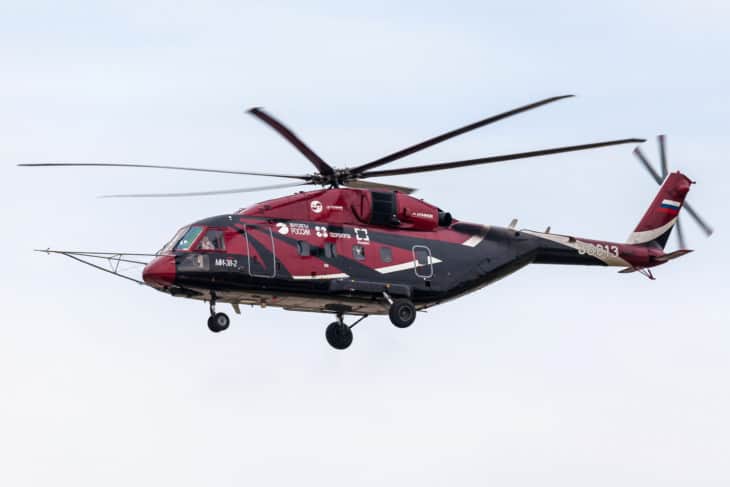
This light transport helicopter was first flown back in 2003 but was still undergoing prototype testing in 2010 with it finally being introduced properly in 2019 for mass orders and production. In fact, the timescale for its development is even longer than that, with development stretching back to the 1980s.
On November 23, 2018, the first military version of the Mi-38 underwent its first test flight. The Russian Defense Ministry announced plans to purchase at least 15 Mi-38s.
The Mi-38 measures 65 ft 5 in., can carry an internal payload of 11,023 lbs, and has a maximum speed of 160 mph courtesy of 2×Klimov TVA-3000 turboshaft engines.
14. VRT 500
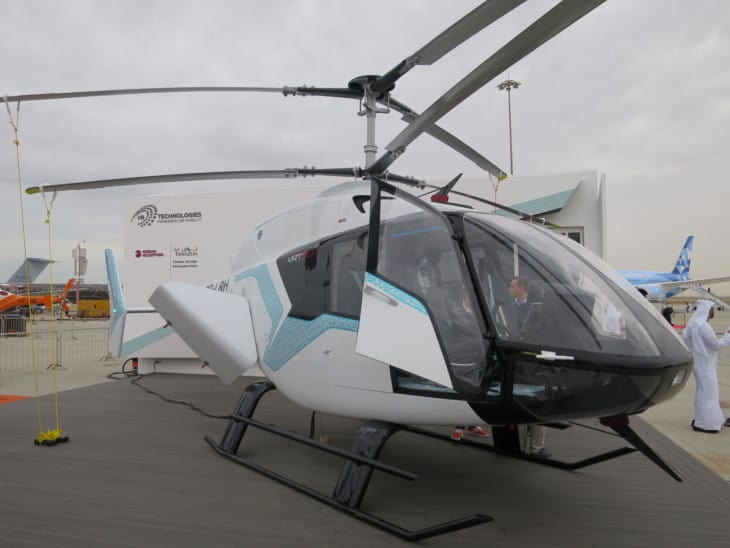
This ongoing light helicopter project was first announced back in 2007, a mockup was displayed at the 2017 MAKS airshow, and a more complete version was unveiled at HeliRussia in 2018. In August 2019, Ludev Aviation, a Malaysian company, ordered five of these VRT-500s.
The VRY-500 will be built in factories near Rome, with another production line possibly set for the UAE, with the development expected to cost around €400 million. The first flight took place in late 2020 and will hopefully be able to obtain type certification around 2022.
Specifications are still in flux as the model is still in development. Some early hints indicate that it could have room for six passengers, be able to handle a payload of 1,610 lbs, and have a maximum speed of 155 mph.
Related Posts
